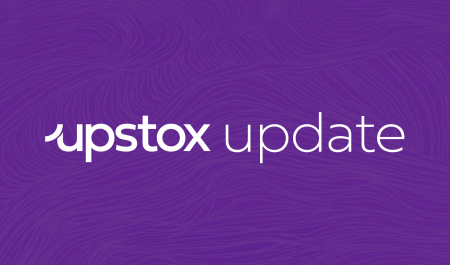One of the main considerations of every investor is to minimize risks. Among various asset classes, this comforting thought is largely associated with investing in gold. For Indians, investing in gold is an old tradition. It goes beyond using gold as an ornament or jewellery. The connection is more about feeling ‘secure’. As markets adopt newer ways of investing in the same asset classes, the idea of investing in gold has also changed. Gone are the days when investors just bought physical gold. Today, investors also invest in exchange traded funds (ETFs) solely dedicated to gold as an asset. Gold ETFs are emerging as a great alternative for an investor who intends to gain from the appreciation in gold prices but does not want the hassle of owning gold in its physical form. Let us understand why this investment product is attracting investors’ interest:
Why to invest in gold ETF?
Though gold has universal appeal, there are a few hindrances investors face while investing in gold. Some of these are listed below:
Purity: Physical gold may have issues related to its purity. Most investors want to ensure that the gold they invest in has no impurities.
Safe storage: Physical gold is exposed to the risk of theft. There are costs of safekeeping and insurance. In such a situation, the peace of mind of an investor is disturbed.
Liquidity: Though gold can be exchanged for cash in almost no time, due to purity issues the liquidity may get impacted. Not all investors hold standardised bullion gold. It is difficult to sell such gold at fair market value. Making charges further eat into returns.
A gold ETF resolves these issues, by allowing investors to invest gold that is pure, safe and fully liquid at all times.
How does a gold ETF work?
A gold ETF is a mutual fund scheme that issues units backed by bullion gold. In India, the capital market regulator Securities & Exchange Board of India (SEBI) mandates asset management companies to hold physical gold as an underlying asset for units of gold ETF. However, globally there are gold ETFs which achieve exposure to gold prices by taking a position in gold futures.
A large investor or a market maker can approach a fund house with bullion gold. The fund house, after ensuring the purity of the gold, creates and issues units of the gold ETF to the investors. The investors can later sell them on the exchange. The units of the gold ETF are listed on a stock exchange and investors trade in those units. The units track the prices of gold.
Gold ETF in India
The first gold ETF in India was launched by Benchmark Asset Management Company in March 2007. The AMC was subsequently acquired by Goldman Sachs India AMC and later merged into Reliance Nippon, which is now Nippon Life India AMC. Nippon India ETF Gold BeES is the largest gold ETF in India with assets under management of ₹6,004 crore. Earlier, in the case of most ETFs, units of a gold ETF used to track the price of one gram of gold. However, over a period of time, to make those units accessible the fund houses have opted to split the units in such a manner that each unit of gold ETF tracks the price of 0.01 gram of gold.
Over the five years ended 27 October 2021, gold ETFs have given 8.16% returns, according to Value Research data. According to monthly data released by the Association of Mutual Funds in India (AMFI), gold ETFs together manage assets worth ₹16, 332 crore, as on September 30, 2021.
Advantages of gold ETF
Gold ETFs are offered by well-regulated mutual funds. There are some advantages in investing in gold ETFs:
- Since the units are backed by bullion gold, there is no risk of impurities.
- Units of a gold ETF are listed and traded on the stock exchange. This is one of the easiest ways to invest in gold from the comfort of one’s home.
- Units of a gold ETF are stored in demat accounts. There is no need to worry about theft. This arrangement works better for long-term investors too.
- Compared to making charges involved in physical gold, the expense ratio charged by the fund houses for gold ETF is low.
Although a gold ETF has its own advantages, it is better to understand the tax treatment of gains earned on units of a gold ETF.
Taxation of gold ETF
Gold ETFs are treated like a non-equity fund for the purpose of taxation. Gains realised on the sale of units held for more than three years are treated as long-term capital gains. They are taxed at 20% rate of tax after indexation benefit. Otherwise gains are treated as short-term capital gains and added to the income of an investor and taxed at a marginal rate of tax.
How to buy units of gold ETF?
You need a trading and demat account to transact in units of a gold ETF. You should log into your trading account and place a ‘buy’ order for a desired quantity of gold units. The gold units bought are credited to your demat account following the T+2 settlement cycle like any other stock or ETF. Following the same process you can place sell orders to sell units of the gold ETF. Gold ETF units track the prices of gold and generate returns similar to that offered by gold, before expenses and transaction costs. When investors sell units of a gold ETF, they receive cash and not gold.
Who should invest in a gold ETF?
Investors looking for financial investment avenues that generate returns similar to gold can consider investing in gold ETF. Similarly, investors looking for diversification across asset classes may want to invest in gold. Such investors may choose to invest in a gold ETF. Individuals planning to purchase gold for consumption purposes at a future date can buy units of gold ETF at regular intervals and accumulate them. It saves them from timing risk as they keep buying at various moments of time. They can sell the accumulated units and use the sale proceeds to purchase gold.
How to choose the right gold ETF?
Although all gold ETFs track the price of gold, investors have to be careful while selecting a gold ETF. Gold ETFs should be liquid. For this, investors must check three things. These are: assets under management (AUM) of a fund should be large, there should be enough volumes on a stock exchange and, more importantly, the spreads between bid and ask prices should be minimal.
Also, the expense ratio of a gold ETF should be minimal. Gold does not generate any income and hence the only way an investor can benefit from investments in gold is via appreciation in gold prices. This means you have to keep the costs of investing in gold low. A low expense ratio eats less into the investors’ returns.
The fund manager of a gold ETF buys gold using the money received from investors. A scheme’s performance should be as close as that of gold prices. The gap between a scheme’s returns and returns on gold is known as the tracking error. This gap should be minimal.
It is mandatory to open a demat and trading account to invest in units of a gold ETF. However, not all investors have these two. Some of them find it difficult to place orders at regular intervals to purchase gold. If they are keen on systematic investment in a gold ETF without a demat account, they are better off investing in gold savings funds. These are fund of funds schemes investing in units of gold ETF.



